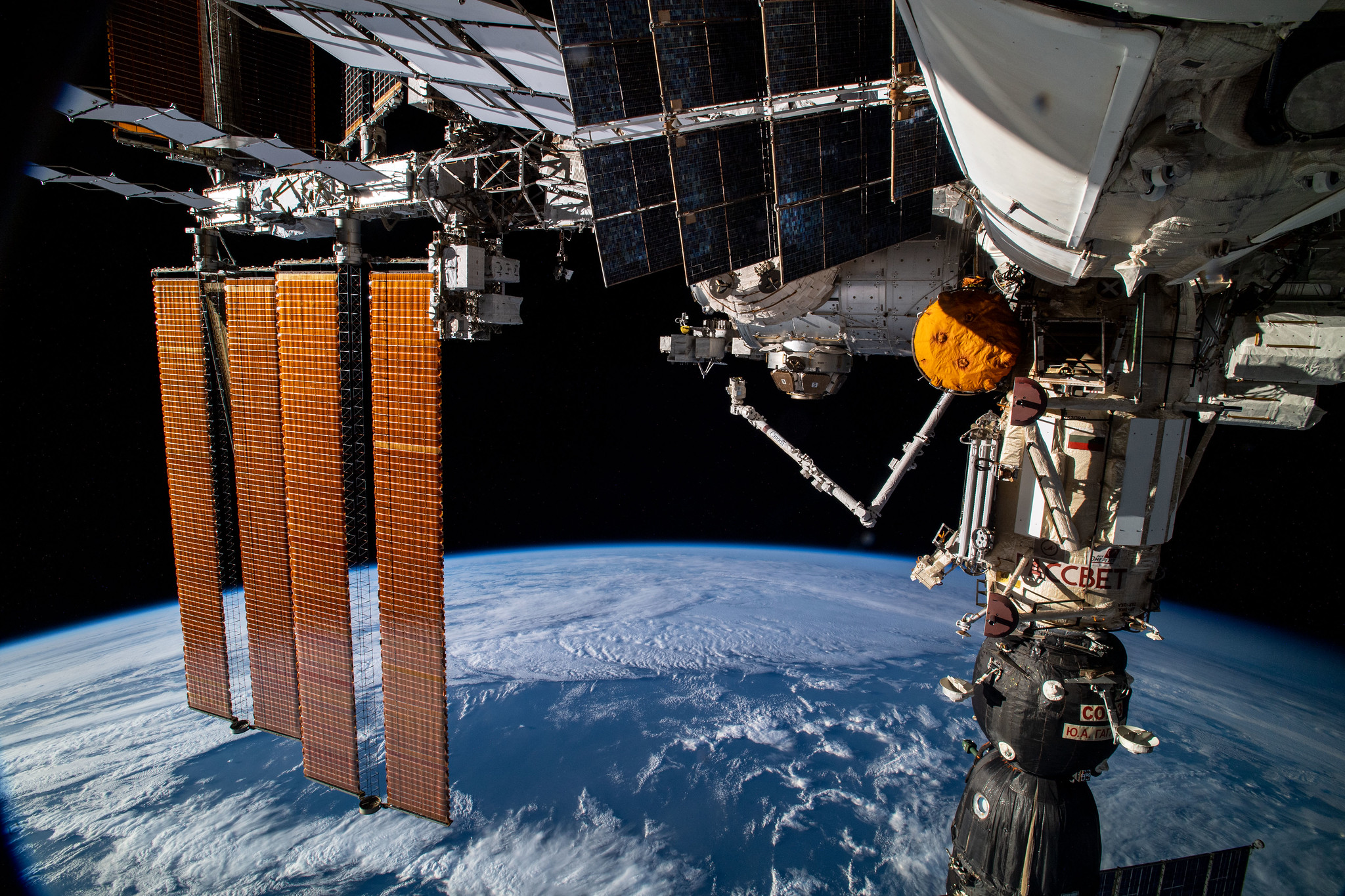
ISS faces momentary chaos after Russian module misfires
Jet thrusters of Russia's new research module accidentally fired throwing the International Space Station (ISS) in ephemeral jeopardy.

Houston had a new problem when jet thrusters of Russia’s new research module accidentally fired throwing the International Space Station (ISS) in ephemeral jeopardy. Russia’s research module successfully docked with the International Space Station on Thursday, only a few hours before the freak accident. It was launched eight days before from the Russian space launch facility in Baikonur, Kazakhstan.
According to NASA and Russian media RIA, the lives of the crew members on board, two Russian cosmonauts, three NASA astronauts, a Japanese astronaut and a European space agency astronaut from France, were never at risk.
ICYMI: Earlier today, the Russian Nauka module inadvertently fired its thrusters while docked to the @Space_Station. Mission Control teams corrected the action and all systems are operating normally. The crew was never in any danger. Stay tuned for a media telecon later today: pic.twitter.com/bjuDmdiZu5
— NASA (@NASA) July 29, 2021
However, the mishap prompted NASA to postpone its scheduled launch of Boeing’s new CST-100 Starliner capsule until at least August 3. It was a highly anticipated test flight to the space station without any crew members.
Thursday’s accident happened around three hours after the Nauka module had launched onto the space station.
Also read: Jeff Bezos is joining the astronaut club; here’s what you need to know
US space officials said, “The module’s jets inexplicably restarted, causing the entire station to pitch out of its normal flight position some 250 miles above the Earth, leading the mission’s flight director to declare a ‘spacecraft emergency’.”
Joel Montalbano, manager of NASA’s space station program, said that a sudden drift in the station’s orientation was first detected by automated ground sensors, followed 15 minutes later by a ‘loss of attitude control’ that lasted a little over 45 minutes.
The 20-metric-ton (22-ton) Nauka module, also called the Multipurpose Laboratory Module, docked with the orbiting outpost in an automatic mode after a long journey and a series of manoeuvres. Russia’s space agency, Roscosmos, confirmed the modules contact with the International Space Station at 13:29 GMT.
LIVE: A new @Roscosmos science module, Nauka, docks to the @Space_Station. The 43-foot long, 23-ton module will automatically link up to the port on the Earth-facing side of the station's Russian segment: https://t.co/mzKW5uV4hS pic.twitter.com/BcmEBMcYLF
— NASA (@NASA) July 29, 2021
The launch of Nauka, which is intended to provide more room for scientific experiments and space for the crew, had been repeatedly delayed because of technical problems. It was initially scheduled to go up in 2007.
Also read: Sirisha Bandla to be the third Indian-origin woman to go to space
In 2013, experts found contamination in its fuel system, resulting in a long and costly replacement. Other Nauka systems also underwent modernization or repairs.
Nauka became the first new module in the Russian segment of the station in 2010. On Monday, one of the older Russian modules, the Pirs spacewalking compartment, undocked from the Space Station to free up room for the new module.
Also read: Who is Wally Funk, the oldest person to fly to space at 82
Russian crewmembers on the station have done two spacewalks to connect cables in preparation for Naukas arrival. After docking, Nauka will require many manoeuvres, including up to 11 spacewalks beginning in early September, to prepare it for operation.
The International Space Station is currently operated by NASA astronauts Mark Vande Hei, Shane Kimbrough and Megan McArthur; Oleg Novitsky and Pyotr Dubrov of Russias Roscosmos space corporation; Japan Aerospace Exploration Agency astronaut Akihiko Hoshide and European Space Agency astronaut Thomas Pesquet.
Also read: What’s a lunar wobble and does the Earth rock too?
In 1998, Russia launched the station’s first module, Zarya, which was followed in 2000 by another big module, Zvezda, and three smaller modules in the following years. The last of them, Rassvet, arrived at the station in 2010.
(With inputs from Associated Press and Reuters)


